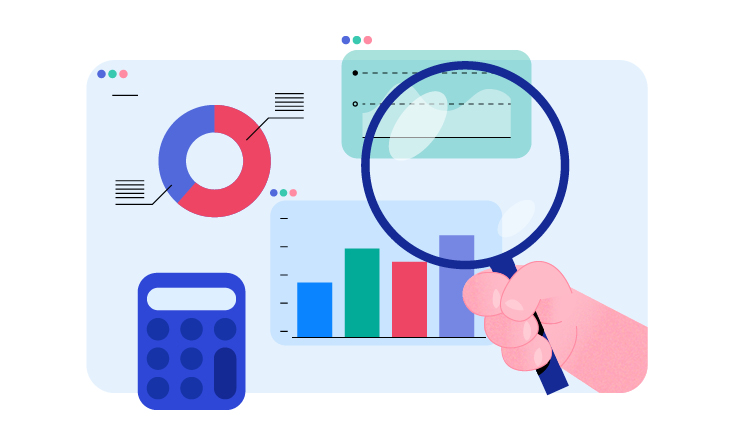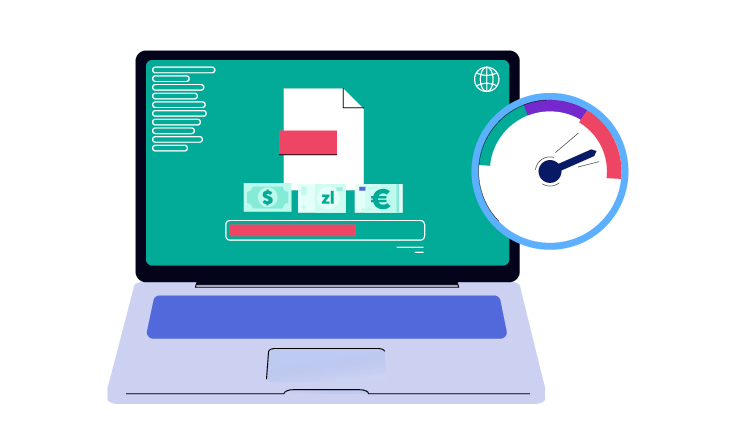What are the types of credit scoring?
Scoring models can be classified according to different criteria. Thus, we can talk about a scoring of individuals or companies (division based on the assessed entity) or credit card, cash or mortgage scoring (depending on the type of product applied for by the client). Taking into account who created and managed the scoring model, we can talk about internal scoring (prepared by banks for their own needs) or external scoring (created and made available by specialized institutions, e.g. credit information offices).
There is a very clear dividing line between application and behavioral scoring. The first one is designed to evaluate new customers on the basis of data provided by the customer in the credit application. Behavioral scoring, on the other hand, is determined on the basis of the history of the customer's behavior concerning the service of financial products. Therefore, it is calculated for regular customers, mainly in order to resell new products or change the terms and conditions of existing products (e.g. increase the credit card limit).
For the most part, the goal of the scoring models is to determine the risk of debt default. However, more and more emphasis has been placed recently on using this method for other purposes:
- profit maximization (what credit terms should be offered to the customer to be accepted, i.e. risk-based pricing)
- increasing the effectiveness of marketing campaigns by investigating whether the customer will be interested in a given product,
- fraud scoring,
- attrition scoring,
- improving debt management by determining whether the customer will be able to repay the loan in the event of financial problems.
Regardless of the type, the scoring models enable an objective assessment of credit risk, which is a key element of the credit granting process. In order to make the credit calculation as accurate, transparent and low-risk as possible, banks increasingly automate it and use ready-made systems that allow for performing a credit assessment model in a point system. The use of such tools reduces the probability of granting doubtful loans and allows for accelerating the entire credit process while reducing the risk of human error.
Individual customer scoring
The risk assessment of natural persons is based on their personal characteristics. The most commonly used are: age, marital status, education, number of dependents, seniority, form of employment, occupation, etc. The risk assessment of natural persons is based on their personal characteristics. Financial characteristics also play a very important role, such as monthly income, possible additional income or information about expenses (repayment of other loans, living costs, bills paid, etc.). If possible, data on the financial history of the customer are also taken into account, such as the number of previous commitments made and the history of their repayment or information about possible overdrafts.
Depending on the type of credit applied for, the list of characteristics to be taken into account in the risk assessment may vary. The scoring model for a mortgage loan is usually more comprehensive than that for a credit card. When buying a house on a loan, the scoring also includes a number of information about the property itself (including its value, LTV level, etc.). It also puts more emphasis on the income data.
Enterprise Scoring (SME)
In the case of small and medium-sized enterprises, the risk of bankruptcy and insolvency is examined by assigning points. Their capital, debt and development strategy are taken into account. In the case of enterprises, the credit calculation is made on the basis of: the characteristics of the industry, the characteristics of the company, its previous financial results. Credit risk analysis is also performed taking into account the company's structure, source of financing, competition, and even the qualifications of employees, mainly those at high levels, are examined. The credit assessment model in the case of a company also takes into account the financial condition of the company, its planned projects, liquidity, financial liabilities and industry risk assessment.
In the case of the smallest companies, however, very often, in addition to taking into account the parameters characterizing the company, the owner of the examined company is also the owner. It turns out that the profile of the owner and their personal credit history is more important than the numbers describing their business. This is particularly often used in the case of the smallest entities operating on the market for a short period of time.








